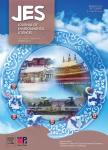Low-carbon transition of iron and steel industry in China:Carbon intensity, economic growth and policy intervention
Low-carbon transition of iron and steel industry in China:Carbon intensity, economic growth and policy intervention作者机构:State Key Joint Laboratory of Environment Simulation and Pollution Control School of Environment Tsinghua University School of Economics and Management Tsinghua University
出 版 物:《Journal of Environmental Sciences》 (环境科学学报(英文版))
年 卷 期:2015年第27卷第2期
页 面:137-147页
核心收录:
学科分类:02[经济学] 0202[经济学-应用经济学] 0830[工学-环境科学与工程(可授工学、理学、农学学位)] 0201[经济学-理论经济学]
基 金:supported by the National Natural Science Foundation of China (No. 41071352) the National Social Science Foundation of China (No. 13BJY030) the National Science and Technology Support Program (No. 2012BAC03B01)
主 题:CO2emission reduction Iron and steel industry Economic growth China Vector autoregression(VAR)
摘 要:As the biggest iron and steel producer in the world and one of the highest CO2 emission sectors, China’s iron and steel industry is undergoing a low-carbon transition accompanied by remarkable technological progress and investment adjustment, in response to the macroeconomic climate and policy intervention. Many drivers of the CO2 emissions of the iron and steel industry have been explored, but the relationships between CO2 abatement,investment and technological expenditure, and their connections with the economic growth and governmental policies in China, have not been conjointly and empirically examined. We proposed a concise conceptual model and an econometric model to investigate this crucial question. The results of regression, Granger causality test and impulse response analysis indicated that technological expenditure can significantly reduce CO2 emissions, and that investment expansion showed a negative impact on CO2 emission reduction. It was also argued with empirical evidence that a good economic situation favored CO2 abatement in China’s iron and steel industry, while achieving CO2 emission reduction in this industrial sector did not necessarily threaten economic growth.This shed light on the dispute over balancing emission cutting and economic growth.Regarding the policy aspects, the year 2000 was found to be an important turning point for policy evolution and the development of the iron and steel industry in China. The subsequent command and control policies had a significant, positive effect on CO2 abatement.



